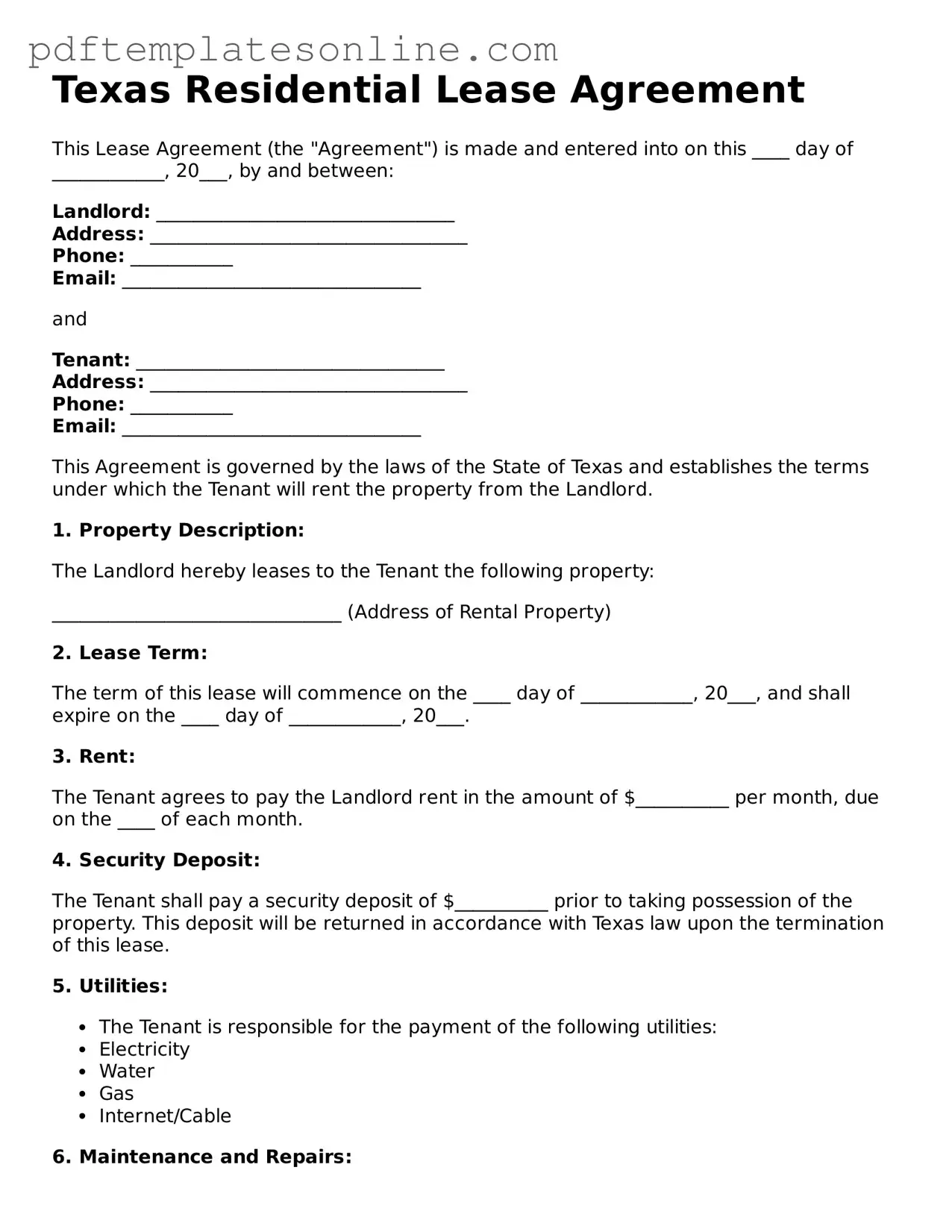When it comes to filling out the Texas Lease Agreement form, attention to detail is crucial. Many people make common mistakes that can lead to misunderstandings or even legal issues down the line. One frequent error is failing to provide accurate information about the rental property. This includes the correct address and unit number. Omitting or misrepresenting this information can create confusion and complicate matters for both landlords and tenants.
Another mistake often seen is neglecting to include all necessary parties in the agreement. Both the landlord and all tenants must be clearly identified. If a tenant's name is left off, they may not have legal rights under the lease, which can lead to disputes later on. It is essential to ensure that every individual who will occupy the property is listed in the agreement.
Many individuals also overlook the importance of specifying the lease term. Whether it is a month-to-month agreement or a fixed-term lease, clarity is key. Without a defined duration, tenants might find themselves in a precarious situation regarding their tenancy status. This can lead to unexpected eviction notices or misunderstandings about rent due dates.
Additionally, failing to outline the rent amount and payment schedule is a common oversight. This section should clearly state how much rent is due, when it is due, and acceptable payment methods. Ambiguities in this area can lead to late payments and potential conflicts between landlords and tenants.
Another common pitfall involves neglecting to address security deposits. It is important to specify the amount of the deposit, the conditions for its return, and any deductions that may apply. Failing to include this information can result in disputes over the deposit when the lease ends.
Some individuals also forget to clarify maintenance responsibilities. Both landlords and tenants have obligations regarding property upkeep. Clearly outlining who is responsible for repairs and maintenance can prevent future disagreements and ensure that the property remains in good condition.
Another mistake is not including provisions for terminating the lease. It is vital to understand the process for ending the agreement, whether through notice periods or specific conditions. Without this information, tenants may find themselves trapped in a lease longer than they intended.
Moreover, many people fail to read the entire agreement before signing. This oversight can lead to surprises later on, especially if there are clauses that significantly impact the tenant's rights or responsibilities. Taking the time to review the document thoroughly is essential to avoid any unpleasant surprises.
Finally, individuals often forget to keep a copy of the signed lease for their records. Having a copy ensures that both parties have access to the agreed-upon terms, which can be invaluable in case of disputes. Maintaining this documentation is a simple yet effective way to protect oneself.
